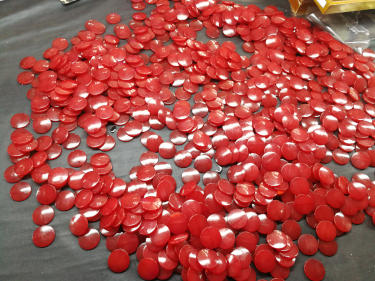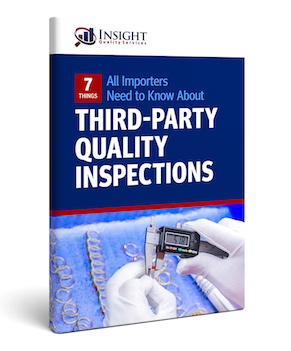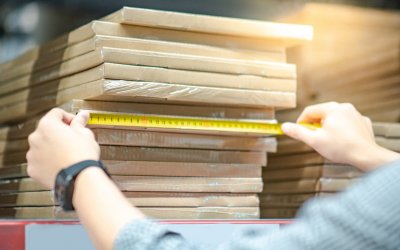The United States has been social distancing for weeks and much of the economy has been shut down, but now things are slowly starting to open up again.
At the beginning of May, about half of the states have partially reopened and are allowing certain businesses like retail stores and restaurants to operate at limited capacity.
Europe is reopening too, with 11 countries that have begun to slowly come out of lockdown.
As more businesses reopen in the Western world, economic activity is expected to pick back up again at some point. This means that if you’re a consumer product importer, you might soon be planning to place orders with your factories.
But as you do start to place these orders, there are going to be certain obstacles to overcome, including:
- A lag in the supply chain, and
- Increased product quality issues.
Why do we say this?
Why Should You Expect a Severe Lag in Your Supply Chain?
When the pandemic started, it was mainly China that was affected, along with a few other countries in Asia.
Wuhan went into full quarantine lockdown and other parts of the country saw heavy restrictions as people stayed home to stop the spread of COVID-19.
By the time China was ready to reopen, the rest of the world had started imposing restrictions and shutting businesses down—and so as Chinese production lines were ready to ramp up, they ended up with very little to do.
Fast-forward to May and production lines have now been sitting idle for months.
In Vietnam, Cambodia, and other parts of Southeast Asia, restrictions have been in place and factories there have been closed as well.

Bangles hanging on a plating rack at a jewelry plating factory
- A plating factory uses chemical baths to give your jewelry a rose gold or gunmetal finish, but those baths have a limited shelf life. Does it make sense for them to keep the baths ready and on hand if they have nothing to use them for?
- A furniture factory does not have enough wood to make your chaise lounges and bookcases. They have to order it from their raw material suppliers, who have also been sitting idle. How quickly will they be able to get the raw material?
Every year after Chinese New Year, there is a ramp-up period that lasts for about a month or more. We wrote about the impact of this in our Chinese New Year 2020 article.
It takes time for manufacturers to get back to full capacity when new workers need to be hired and trained.
We can expect that a similar ramp-up period will happen after economic reopening. And it won’t just affect China, but the other countries across Asia that have also shut down.
The ramp-up period will impact product quality.
The Impact of Economic Reopening on Product Quality
Product quality will be affected by the reopening period for two key reasons:
- New workers need to be trained
- There is economic uncertainty in the world
Since factories have had to scale back their workforce, they need to rehire, and new workers are more likely to make mistakes.
That is straightforward enough, but what about the economic uncertainty part?
Economic uncertainty has a tendency to make factories cut corners.
As factories get nervous about whether or not they can survive in the economic wake of the virus, some will decide to make material substitutions or other small changes to your product without telling you.
This phenomenon is called quality fade and it is common in low-cost countries. Even a factory that you have a good history with can change overnight due to the new reality they are facing.
Therefore, you need to be extra-diligent to counter the additional risk that exists right now.
How? By modifying your quality plan to suit the needs of the time we’re in.
What Steps Can You Take to Improve Your Quality Plan?
First of all, now is a good time to revisit the specifications you’ve given to your factory. It is important to have clear specifications so that you don’t give them any wiggle room to make changes to your product.
If they start using a different grade of metal than they did before—but you’ve never specified the exact metal you want—they have an excuse to change it.
Don’t give them that excuse.
Also, you may want to consider making changes to how you conduct inspections.

Plastic resin beads ready for incoming raw material inspection
- Pre-production inspections can be used to check the quality of your raw materials or to catch the unwanted substitution of a lower-grade material.
- DUPRO inspections can be used to help you catch issues earlier in the production process so that you can deal with them before they become a bigger problem.
The key thing to understand here is that you should be aware of all the inspection options available to you so that you can choose the one that is most appropriate for your situation.
Also, if you don’t already include carton drop tests as a part of your inspections, this is something you might want to request. If the factory starts substituting in a lower quality carton, your products might not survive the journey overseas. Carton drop tests help ensure that you catch things like this.
We recently released a new white paper called 7 Things All Importers Need to Know About Third-Party Quality Inspections, and it is worth a read for anyone who is serious about the quality of their products.
If that sounds like you, consider taking the time to download and read it.
Free White Paper: 7 Things You Should Know About Third-Party Quality Inspections
Working with a third-party inspection company (like Insight Quality) helps you to ensure the safety of consumers, minimize returns, and maintain your good brand image.
But when you’re working with an inspection company, there are certain things you need to understand to really leverage the service and get the best results. Find out what they are.





0 Comments